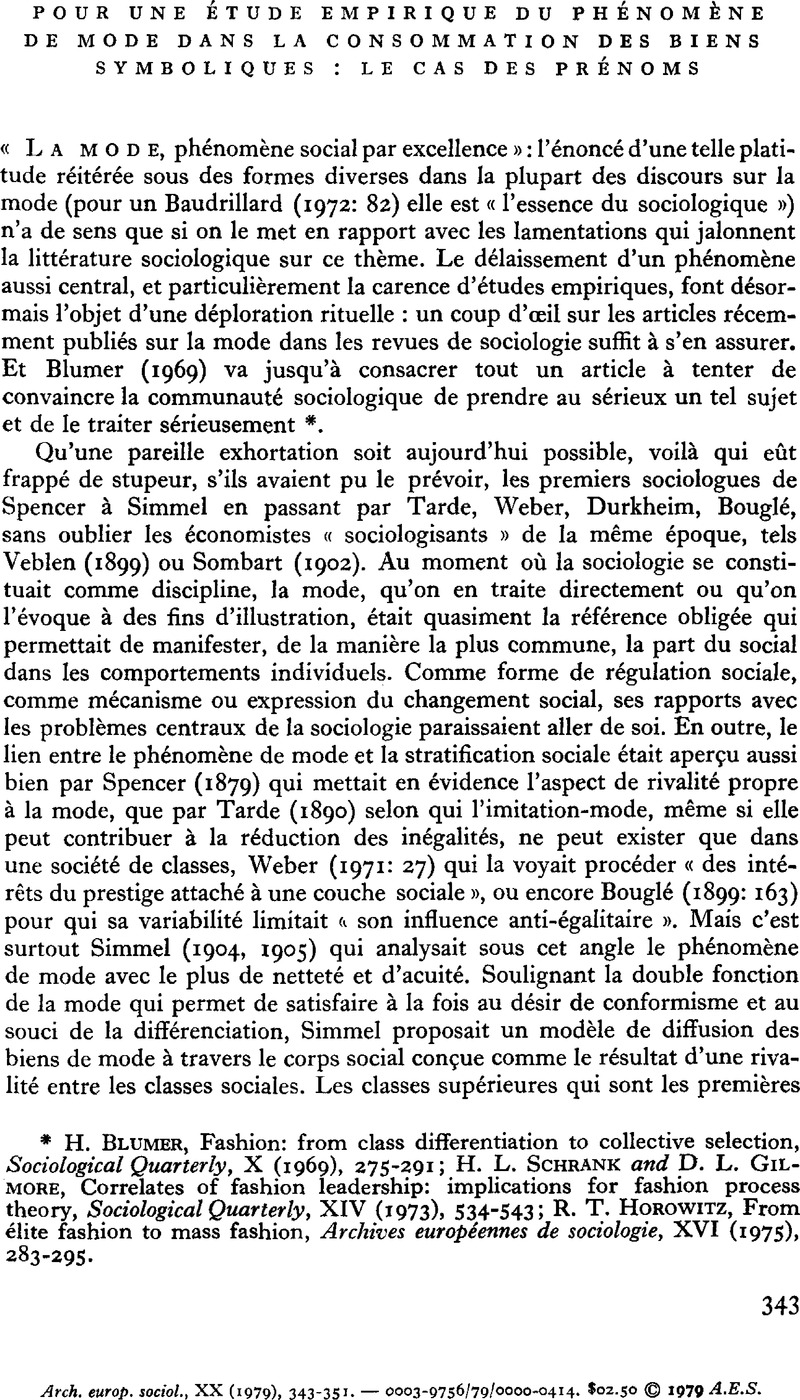Crossref Citations
This article has been cited by the following publications. This list is generated based on data provided by Crossref.
Dupaquier, Jacques
1981.
Naming-Practices, Godparenthood, and Kinship in the Vexin, 1540-1900.
Journal of Family History,
Vol. 6,
Issue. 2,
p.
135.
Van Woerkens, Martine
1990.
Men's and Women's Names.
Diogenes,
Vol. 38,
Issue. 151,
p.
104.
Khatib, Syed Malik
1995.
Personal Names and Name Changes.
Journal of Black Studies,
Vol. 25,
Issue. 3,
p.
349.
1997.
Hmong du Laos.
p.
205.
Vandebosch, Heidi
1998.
The Influence of Media on Given Names.
Names,
Vol. 46,
Issue. 4,
p.
243.
Alter, N.
2001.
International Encyclopedia of the Social & Behavioral Sciences.
p.
3681.
Alter, Norbert
2002.
Les logiques de l'innovation.
p.
13.
Chenu, Guillaume Burnod et Alain
2003.
Les professions et leurs sociologies.
Régnier, Faustine
2004.
L’exotisme culinaire.
p.
245.
Héran, François
2004.
Un classique peu conformiste : la cote des prénoms.
Revue européenne des sciences sociales,
p.
159.
Leroy, Sarah
2006.
« Les prénoms ont été changés ».
Cahiers de sociolinguistique,
Vol. n° 11,
Issue. 1,
p.
27.
Méchin, Colette
2006.
La fonction prénominale.
Recherches sociologiques et anthropologiques,
Vol. 37,
Issue. 2,
p.
165.
Berger, Frédérique F.
Lemouzy-Sauret, Bernadette
and
Sauret, Marie-Jean
2008.
Clinique du sujet et du lien social contemporain.
Cliniques méditerranéennes,
Vol. n° 78,
Issue. 2,
p.
83.
Chareille, Pascal
2008.
Genèse médiévale de l'anthroponymie moderne. Tome VI : Le nom, histoire et statistiques.
p.
223.
Mosbah-Natanson, Sébastien
2011.
La sociologie comme « mode » ?.
Revue française de sociologie,
Vol. Vol. 52,
Issue. 1,
p.
103.
Alber, Alex
Anzalone, Guilhem
and
Bernon, Marie-Laure
2015.
Différenciations sociales des présentations numériques de soi.
Terminal,
Vol. 117,
Issue. ,
Coulmont, Baptiste
Supervie, Virginie
and
Breban, Romulus
2016.
The diffusion dynamics of choice: From durable goods markets to fashion first names.
Complexity,
Vol. 21,
Issue. S1,
p.
362.
Grange, Cyril
2016.
Nommer : enjeux symboliques, sociaux et politiques.
Annales de démographie historique,
Vol. n° 131,
Issue. 1,
p.
5.
Coulmont, Baptiste
2016.
Des prénoms qui ont du chien : le partage des prénoms entre hommes et chiens.
Annales de démographie historique,
Vol. n° 131,
Issue. 1,
p.
151.
Coulmont, Baptiste
2016.
Changer de prénom.
p.
139.



